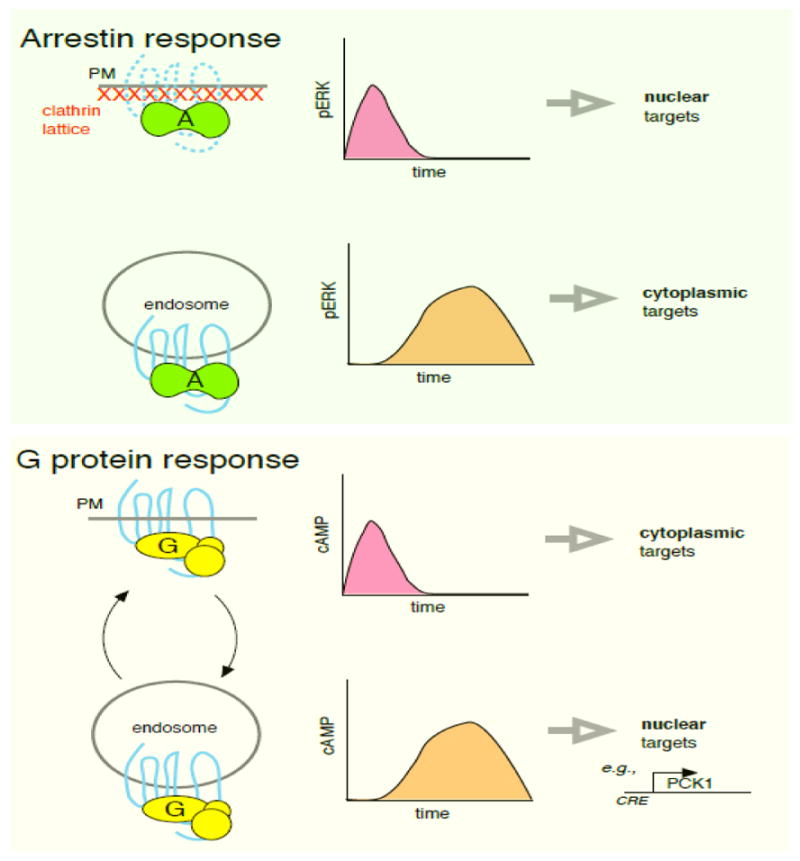Figure 2.

Schematic contrasting current view of functional impact of localized signaling transduced by β-arrestins and Gs. Top panel: GPCR-mediated activation of β-arrestins in the PM is thought to produce a rapid ERK response that can access nuclear targets. Activation in endosomes produces delayed ERK activation and sequesters ERK in the cytoplasm, thereby preventing access to nuclear targets. Bottom panel: GPCR-mediated activation of Gs in the PM produces a rapid and transient response that activates cAMP-dependent targets in the PM and cytoplasm. Activation in endosomes produces a delayed response that preferentially accesses nuclear targets (induction of the cAMP-responsive gene PCK1 is shown as an example. For GPCRs that are capable of efficient recycling, PM and endosome-initiated activation waves can occur repeatedly in the prolonged presence of agonist through multiple rounds of endocytosis and recycling (depicted as curved arrows).
